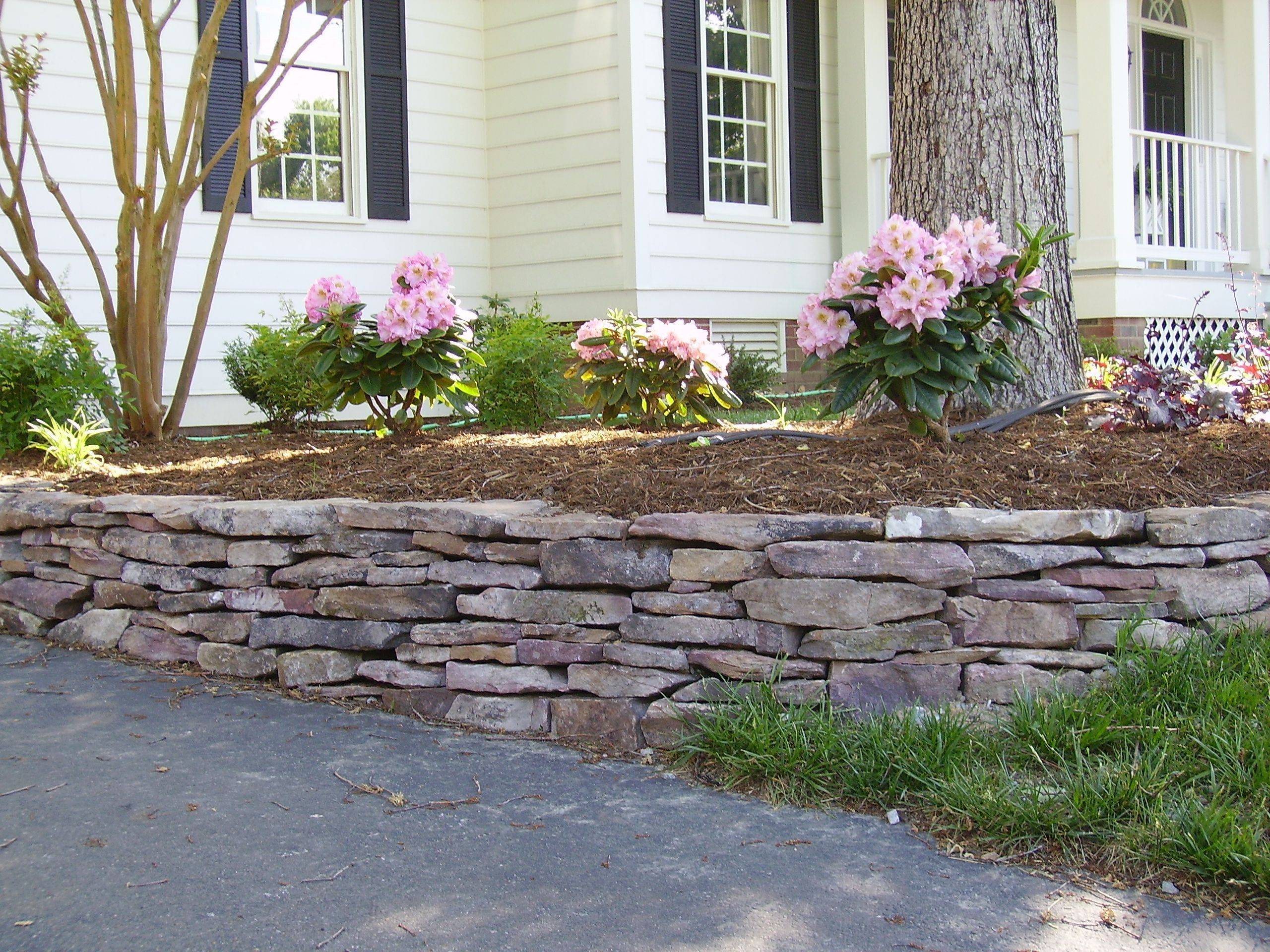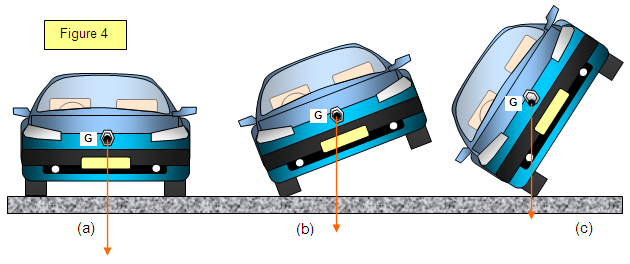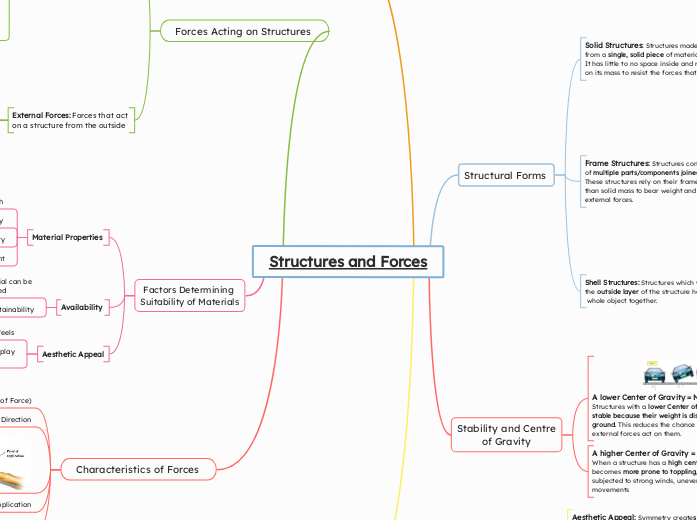Structures and Forces
Causes of Structural
Failures
Bad designs
Faulty Construction
Foundation Failure
Extraordinary Load
Structural Forms
Solid Structures: Structures made
from a single, solid piece of material.
It has little to no space inside and relies
on its mass to resist the forces that act upon it.
Erasers

Stone Walls
Frame Structures: Structures consisting
of multiple parts/components joined together.
These structures rely on their framework rather
than solid mass to bear weight and resist
external forces.

Spider-Web
Bicycle
Shell Structures: Structures which where
the outside layer of the structure holds the
whole object together.

Eggs
Helmets
Stability and Centre
of Gravity

A lower Center of Gravity = More Stability
Structures with a lower Center of gravity are more stable because their weight is distributed closer to the ground. This reduces the chance of tipping over when external forces act on them.
A higher Center of Gravity = Less Stability
When a structure has a high center of gravity it becomes more prone to toppling, especially when subjected to strong winds, uneven loads, or sudden movements
Role of Symmetry in structures
Aesthetic Appeal: Symmetry creates visually pleasing and balanced structures, making buildings and designs more attractive

Structural Stability: A symmetrical structure distributes forces evenly, reducing weak points and increasing durability. e.g bridges
Load Distribution: Proper symmetry helps prevent titling by ensuring equal weight distribution across the structure.
Forces Acting on Structures
Internal Forces: Force that
squeezes materials together
Compression: Force that
squeezes materials together.
e.g: The weight of a roof
compressing the walls of
a building
Tension: Force that pulls
materials apart. e.g: The
stretching of a rope in
a tug-of-war game.
Torsion: Force that twists
materials. e.g: Twisting a wet
towel to wring out water

Shear: Force that causes
parts of a material to slide
past each other. e.g. Scissors
cutting through paper.
External Forces: Forces that act
on a structure from the outside
Gravity: The force that pulls objects
toward the center of the Earth.
Friction: The resistance that
one surface of an object encounters
when moving over another.
Wind: Air in motion excreting
force on structures.
Earthquakes: Seismic forces
causing ground movement
Factors Determining
Suitability of Materials
Material Properties
Strength
Flexibility
Durability
Weight
Availability
How easily the material can be
collected and produced
Cost and sustainability
Aesthetic Appeal
How the material looks and feels
Texture, color, and finish play
a role in marketability
Characteristics of Forces
Magnitude (Strength of Force)
Direction

Point of Application
Plane of Application
